I just got a final sample of the WhiteFox and it’s simply fantastic. The barebone kits will start shipping in a few days and I’m so excited to get your feedback. I hope you’ll like it as much as I do, it has been a long and exhausting endeavor but it was totally worth it!
Assembling the WhiteFox is easy but there are a couple of things you should be aware of so I compiled this quick how-to guide that will bring you to a safe build. Even if you are an experienced DIYer you might find some interesting pointers, so give this a quick read anyway. Let’s get started!
What you need
By now you should have:
- the WhiteFox PCB
- a plate of your choice
- the case
- costar stabilizers
- a bag of screws
- aluminum and rubber feet
This represents the barebone kit. You of course also need:
- micro-USB cable
- switches
- totally optional: LEDs
- soldering iron or station
- wire solder
- possibly keycaps :)
As per the soldering iron if you plan on building more stuff in the future I’d highly recommend the Hakko FX888D or the Weller WES51. If you don’t see yourself using it so often, you can find very inexpensive 60W soldering irons for around $15 / €15 (and they often also includes the solder). I would not suggest buying cheap soldering stations as they usually don’t last long.
Remember to grab some wire solder too. Any 0.8mm 60/40(-ish) should work. Don’t take too big or too small gauges as they are harder to work with.
The WhiteFox supports backlighting but LEDs are totally optional. Remember that if you add the LEDs you won’t be able to open the switches afterwards to lube the slider or change spring. Desoldering the LEDs is a very tedious and dangerous business (I know it by direct experience), so make up your mind in advance. If you decide that you need backlight, I’d suggest you to take 2x3mm ~3v rectangular LEDs; they are a little harder to find but they are more compatible with thick keycaps. If you can’t find them, try with 2mm round ones.
Soldering switches
NOTE: there are various revisions of the Whitefox, if you have plate mounted stabilizers remember to mount them before soldering the switches!
Take the plate, be sure to place the switches on the right side (doh!) which is the one with the sockets for the countersunk screws.
Pick 5 switches –double check that the two contact pins are straight— and place them to the four corners and in the middle of the plate. If you have clicky or tactile switches always try them between your finger before soldering them. It is not uncommon to get one faulty switch.
Flip the plate, align the PCB over the switches and gently press until all the 5 switches fit into their pad holes (you should be looking now at the side of the PCB with the little fox logo). Check that all switch housings touch the PCB looking at it from all sides. Also check that none of the pins bent when you pressed the PCB down.
If all went well, it’s time for soldering.
If the PCB doesn’t seem to stick well in position and comes off the switches you can use some clothespins or a rubber band to keep it in position until the 5 switches are soldered. Be careful not to damage any on board component!
If you can change the temperature of your soldering station, I usually set it to 320°C. They sometimes suggest lower temps, but I wouldn’t do that. Low heat means you need to stay longer over the components and we want to go as fast as possible without risking a cold solder point. But anyway I’m not an expert, feel free to search soldering tutorials and see what the gurus have to say about this.
The following is a quick video on how I solder the switches. It should show you how long to stay over the solder points and how much solder to use.
You don’t need much solder and you totally don’t want a “solder blob”. Also the solder point should be shiny, if it is opaque, you didn’t heat it well enough and you should remelt the solder for few seconds.
It happens that one solder point doesn’t really want to come out well: too little solder, or the solder didn’t fill the whole pad or the solder keeps sticking to the iron instead of the PCB. Do NOT insist. Let the solder point cool for a bit. Clean the iron tip over a damped sponge or some steel wool and start over. Do not keep warming the same point for too long or you risk to melt the switch plastic housing or worse the slider inside.
This is how my solder points look. They might not be pretty but they work.
Time for testing!
Before proceeding with all the other switches it might be a good idea to test that the PCB is actually working. They all passed QC but better safe than sorry!
Put the plate on the WhiteFox case (you don’t need any screw), connect the USB cable, open a text editor and press the center switch. Congratulations! The fox just typed its first character!
If it doesn’t work, don’t panic. Unplug the USB cable, flip the PCB, plug the cable again and be careful not to short any component. Now try to push the small button that you see on the bottom of the PCB. If a little orange LED turns on, then the PCB is probably working and the problem is just a sloppy soldering job. Unplug the PCB and try to fix the switch solder points. I’m pretty sure it will work this time. If it doesn’t try to contact me or InputClub, we are here to help.
Now that we know the PCB is working, disconnect the USB cable and proceed by adding all the remaining switches. Again check that the pins are straight and not bent. The pins are quite delicate and you don’t want to break them!
When all switches are in position, a long soldering session awaits you. Don’t rush it and have fun!
Soldering LEDs
Before proceeding with the LEDs I’d check that the keyboard worked at this stage. If you got a faulty switch (highly unlikely) it is easier to desolder it without the LED.
Soldering LEDs is basically the same but the pads are smaller so it takes some practice.
If you are really paranoid you might want to test all LEDs before soldering them. To do so you could use a standard 3v battery, be careful not to invert the polarity and keep the LED lit just for a second.
The PCB has been designed so that the LEDs work in both orientations but the preferred position is longer lead on square pad. You’ll see that the LED pads are one round and one square and one of the LED pins is longer. Let me stress on this: put all the LEDs on the same orientation with the long leg on the square pad.
I usually proceed one row at a time. Straighten the LED pins and push them deeply into the switch. They usually stay in position by friction but if they don’t you can slightly bend the pins once inserted into the PCB.
You need a very little quantity of solder, but check that the pad is well covered. When you have finished the row you can cut the exceeding leads to the base. Now check again that all solder points are sane and happy. If one looks suspicious give it another run.
Again, I’m no expert but this is how I solder LEDs.
You can now test the board again to check that all LEDs are working. If one doesn’t work re-check the solder points, if they look good you might have a faulty LED, you need to desolder it and try with a new one. If it still doesn’t work it might be a broken trace. That is more complicated to fix, contact us, we’ll try to help.
Almost done
Now fasten the aluminum feet to the case, you don’t need a screw driver, just hold the screw head with your thumb and screw in the feet.
Then stick the rubber feet, two at 1mm from the bottom corners and one in the middle between the other two (use the Fox nose as a reference). For the sake of stability try to place them at the same distance from the bottom edge.
Now fasten the plate to the case with the 8 tiny screws. There might be some aluminum dust inside the screw holes so be careful when tightening and do not push too hard. Stop just when the screw head is flush to the plate (probably one half-turn before you actually reached the end of the travel).
Stabilizer time! Put the plate stabilizers in position, with the hook for the wire looking down. Slightly push the top small rail outwards so the stabilizer forms a nice straight U. If you are obsessed about smoothness you may also want to add some lubricant to some key spots on both stabilizers like shown in this picture.
Now put the stabilizer bits to the keycaps (the longer part should be pointing up towards your monitor) and insert them into the wire, one side at a time and finally push the keycap into the switch stem. I shoot a quick video not long ago that shows an alternative way to place costar stabilizers. You may want to give it a look.
All left to do is to position the remaining keycaps and enjoy the WhiteFox! The default firmware is very basic and you will very likely need to update it. To do so just head to the online configurator, it’s pretty easy to use but in the coming days I’ll post a quick tutorial about it as well.
Congratulations! You’ve just built your first (second? third? …) keyboard from scratch! Nothing is more gratifying than typing on a keyboard you can call your own. I hope you’ll be enjoying the WhiteFox for long years! Drop me a line in the comments if you don’t mind with a picture of your fox!
Troubleshooting
One or more switches don’t work
You probably just need to check the switch solder points. It is very likely that you missed a pad. Take a magnifying glass and check the incriminating switch, even better recheck all the pads.
If more than one switch in the same column or row don’t work you may have a broken trace, unfortunately it happens if –for example– your soldering iron slipped over the PCB during the soldering session. That is easy to fix, you just need a small piece of electrical wire that will be used to bridge the broken trace. Contact us, we’ll try to help.
One or more LEDs don’t work
First of all check the LED pads, reheat the solder or maybe add some. Take a magnifying glass and verify that all solder points are good.
If it still doesn’t work it is likely that the LED is burnt. You need to desolder it and place a new one. Be very careful, it’s easy to damage the PCB while desoldering.
If a cluster of LEDs is not working you probably have a broken trace. It is easy to fix with a piece of electrical wire, but it might take some time to find out the culprit. First of all check if you can see any visible scratch on the PCB. If you can’t find it, contact us and we’ll try to help.
The keyboard does not work
If the keyboard seems not to be working at all, try to connect it and press the button on the back of the PCB. If an LED lights up, the PCB should be fine, try to flash a new firmware from the online configurator.
If the LED does not turn on, chances are that either the PCB came without a bootloader or the board is fried. If you have a multimeter, check that the board receives current from the headers on the bottom of the PCB. If it does, you are probably missing the bootloader (easy fix but you need some gear). Otherwise you will probably need a replacement.
The keyboard is too good to be true
I’m sorry, there’s no fix for that. Enjoy it!
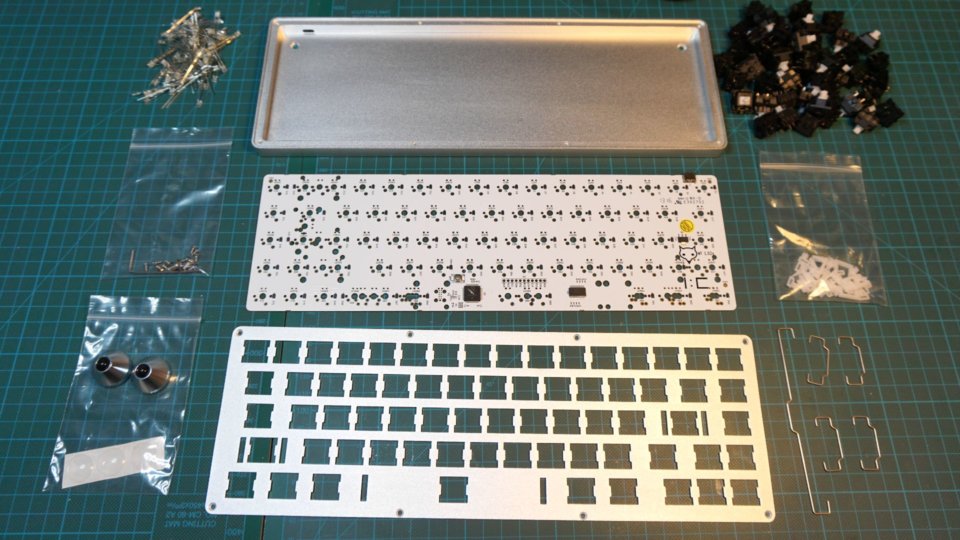
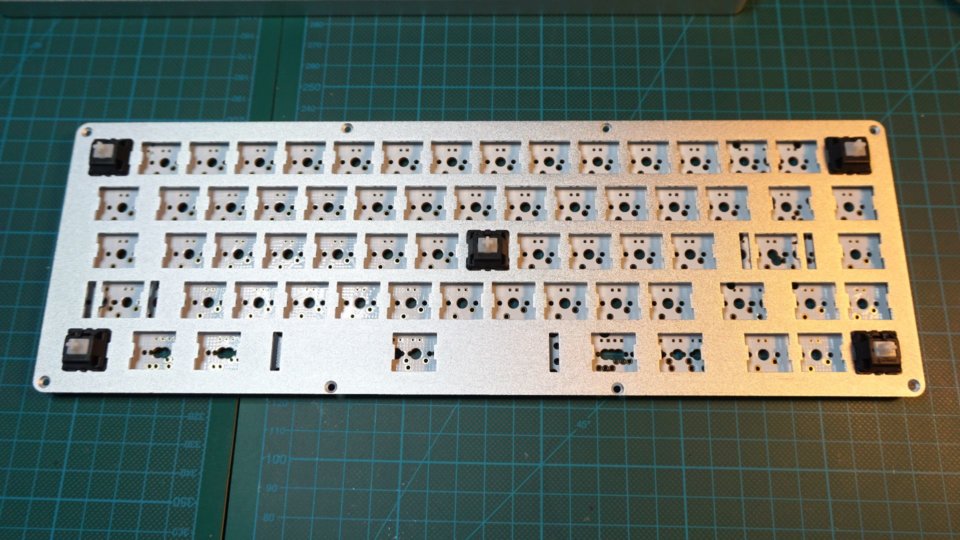
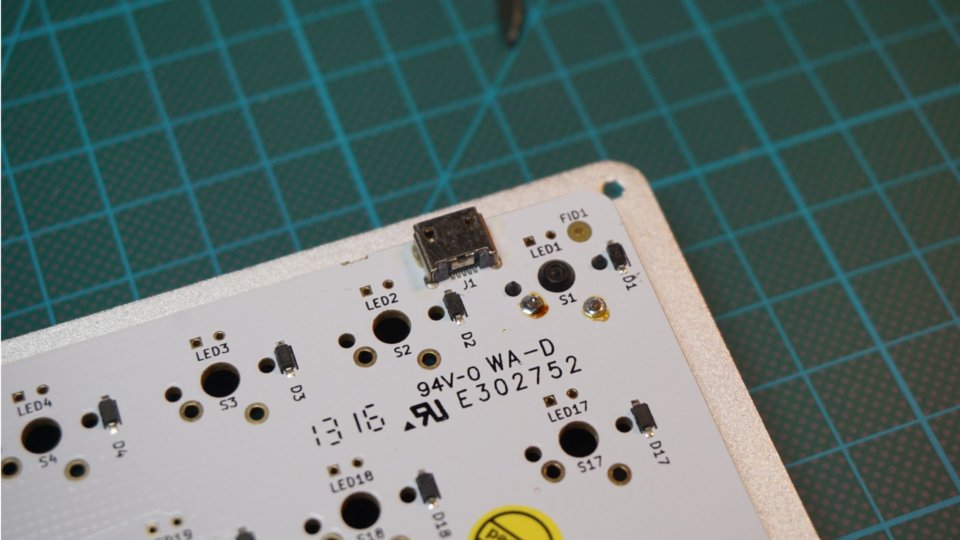
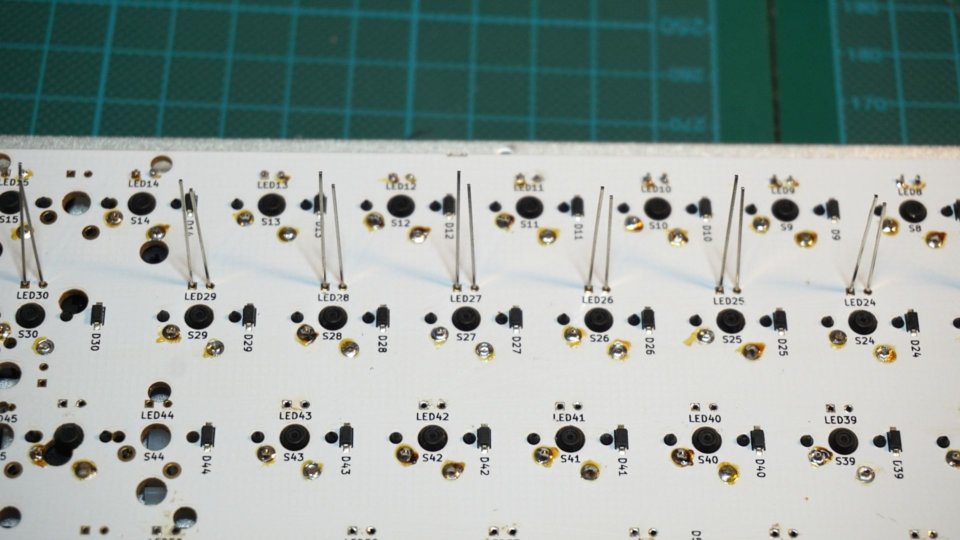
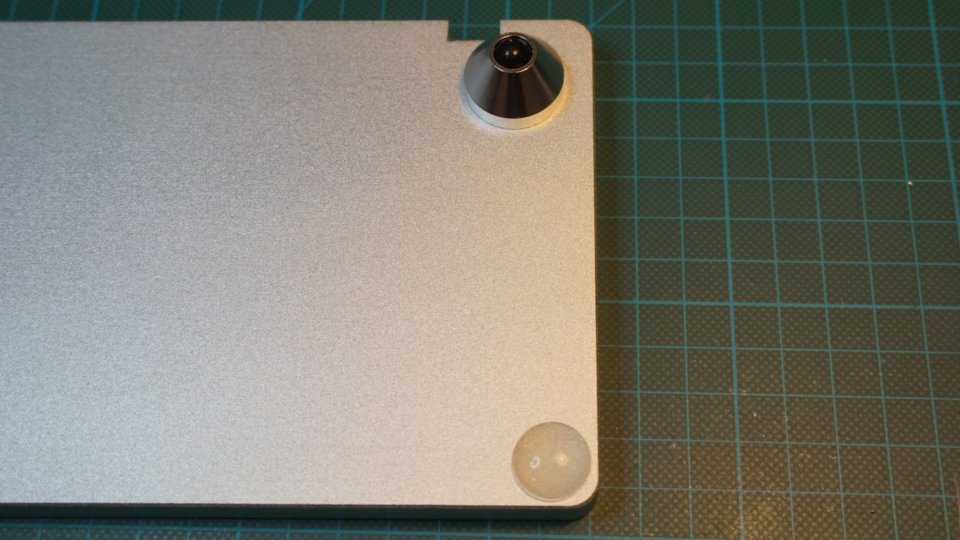
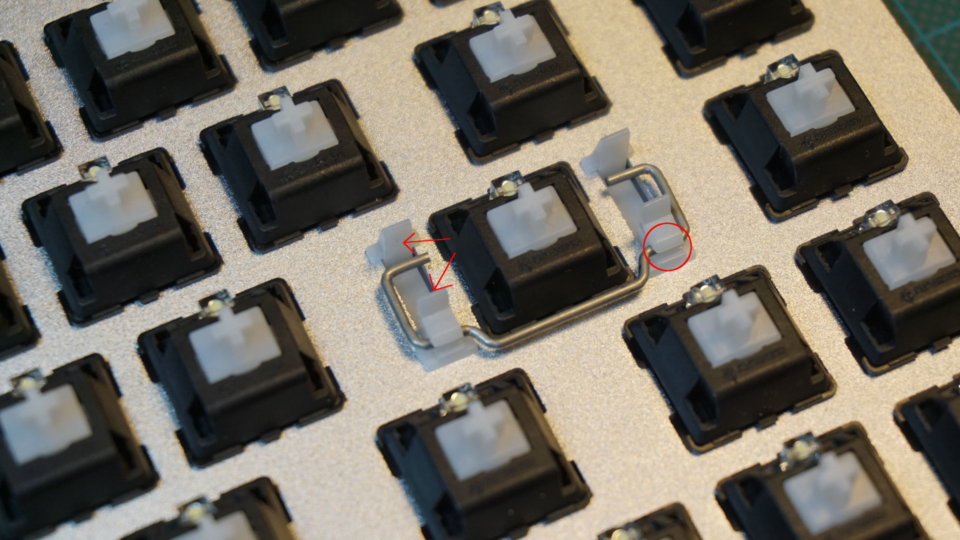
Comments
Great guide! Hope I’ll be getting my shipping notice soon. :)
Next to the MK20DX256 (U1) I can see a crystal (X1) which is there for obvious reasons. Do you know if this is a 16 MHz crystal like on the Teensy 3.2?
In fact, do you know if there is anywhere that I can find the schematic for this board?
schematics will be released soon! Sorry I don’t have specifics of the crystal at this time. I’ll look into it.
Any news on those schematics?
I would love to finish off writing my firmware. I need the schematic to know what else I need to implement before I can start testing it all.
My WhiteFox has arrived but as you will notice from the Massdrop discussion page, there seem to be issues with the legends on the keycaps.
Other than the legends, there are also a few other minor issues (to be honest, these are almost unnoticeable). There are shadows of some kinds of protective screws or pegs which seem to have been used to cover the screw holes during the finishing process used to finish the aluminium (sand blasting?). The screw holes in the plate seem to be very close to the edges for the four bottom and top centre screws.
The major issue has been with the keycaps. MD is busy fixing that with the manufacturer.
I’ll talk to I:C about the schematic, we should put everything online really soon.
here you go! https://github.com/kiibohd/pcb/tree/master/WhiteFox
Wonderful.
The mystery chip (U2) is, as I predicted, a LED controller… and what a fancy LED controller at that! It can individually dim each LED on the board!
With this I can have a lot of fun. But sadly I will have to implement the DFU protocol in my baremetal firmware (otherwise I’ll brick my chip, unless I have the parts for a flashing tool). Oh well, another day another challenge.
On an unrelated side note, I just noticed that the plate form my ISO WhiteFox does indeed have slightly misaligned holes (when placing the plate, the drilled holes are misaligned with the tapped holes in the case but not enough to cause any issues). However, the second screw counting from the bottom left does protrude slightly. (I’ll post some pictures on massdrop during the weekend.
I feel like massdrop have done your wonderful design an injustice through sub-standard quality control.
sorry to hear that, but I’m pretty sure you can fix it with a little craftsmanship. Please post some pictures I might be able to help you.
Can’t reply to your other message (limit on nesting level?) so I’ll reply here.
Here is a link to an imgur album showcasing the misalignment and also the smooth spot I mentioned in my second reply (I edited the picture so that you don’t have to scroll up and down to try to compare things):
http://imgur.com/a/r0D4K
The patch of smoothness is really the one thing which is killing the feel of the white fox for me. If you know some way that I could recreate the look and feel of the rest of the case in that one spot, I would be really grateful.
I could probably carefully use a file to file away bits of the misaligned hole until the screw screws in flush.
The one issue is that I feel that at £180 I am paying for what I would consider to be a premium product. And sure, the design is outstanding, I love how the WhiteFox looks in the MD pictures and all your pictures, but it seems like my WhiteFox has too many mistakes to make me feel as excited about it as I was when I saw your pictures and the MD pictures.
MD is sending me replacement keycaps (a full set I would imagine) but I think I will also send these pictures to them asking them if that is really the quality I should expect from them. And I really do truly feel sorry for you because it feels like I am complaining to you about something MD screwed up.
And a final note: I’ve been considerably busy lately, this is why it took me so long to edit these pictures and send them to you, so if you reply I might not be able to reply for a while. You can also send me an email if you wish (probably will get to me quicker and won’t clutter up your comment section). I imagine you have it, but if not: tk at the-tk dot com.
Just got my order from MassDrop, and realized that I got the kit instead of the fully assembled. Watching your videos and reading your post (along with this – https://www.youtube.com/watch?v=YhfQRv8KLJU) and it doesn’t seem *that* hard :)
Hopefully I won’t destroy my board.
good luck! and keep me posted!
Update:
Well well well, apparently I should have listened to *you* and got bigger gauge wire :)
I did the points like you showed above (great tip) but couldn’t stop once I got into the rhythm. I did about 10 switches and so far so good. Some are a little.. janky, but others look great!
Can’t wait to get this done (I might do the LED at a later time, not a huge fan of LED honestly).
I also should have gotten a little hotter iron. Ended up getting the Weller WLC100. Not a bad iron, but the default tip they sent you really sucks for this type of solder (its more like soldering wires together, not for joints.. screwdriver tip).
.. I do have to say your comment back was a little motivation which is why I started tonight lol.
Do you know if the QMK firmware is compatible with the WhiteFox microcontroller ?
Thanks !
you mean TMK? Yes, it is! I’ll post about it real soon!
Thank you, but I was really asking about QMK (made by the OLKB guy) which was a fork of TMK but not anymore.
It has some additional features compared to TMK, that’s why I asked.
sorry, I’m not familiar with QMK. TMK has been ported to the WhiteFox, including backlighting.
Thanks anyway, I’ll test it out once I get my whitefox then ^^
Answered my own question :
https://github.com/jackhumbert/qmk_firmware/issues/381
ChibiOS is being worked on to add ARM support to QMK. It will pave the way to full WhiteFox support.
All my LEDs lit up except LED38. While replacing the bulb, I fried the solder points. Which other posts can I jumper it to for power?
I believe 38 goes square to 22 and round to 39
Thanks for being so involved in this project, Matt. Appreciate the help!
So I have a bit of soldering/electronics experience, but not for anything so… completely designed.
My problem is that my USB port doesn’t line up with the hole in the case
http://i.imgur.com/JGScGfc.jpg
I have some M2 washers that I can use, but I need to stack 4 of them and this presents two problems:
– ruins the flush fit of the plate to the case
– lining up 4 washers on 4 screws at the same time to lift the top edge of the plate by a uniform amount is beyond my dexterity.
My assumption is that I need to desolder, hold the PCB down harder in that corner and resolder.
here’s some more pics:
http://i.imgur.com/jklY65K.jpg
http://i.imgur.com/7c6ZC4F.jpg
Any advice you can give me?
You haven’t pressed the switches down enough on the PCB. The switch should go all the way down until the bottom casing hits the PCB.
Buggery.
Looks like I’m buying some solder wick tomorrow.
Thanks for the quick response mate.
I found during assembly that the shafts of the switches are a *very* tight fit on the PCB. I would go so far as to say I needed to use force. Is that expected? As you can see, I’m using zealios. Are Gateron’s PCB shafts slightly larger than cherry’s?
the switches are pretty tight fit. they almost “click” in place. if you turn the PCB upside down they don’t slip away.
sorry to hear about your misadventure… a long desoldering session awaits you. be careful when desoldering not to damage the traces!
I’m having trouble flashing the firmware for my board. Zadig fails when trying to install the USB drver every time, saying “(other error)”. I’m on a relatively fresh install of Win7 64 bit
this is a very generic error… very hard to pin-point. Try to reboot in safe mode and try from there.
Ok I don’t know what I did but it worked. After it failed again I unplugged and replugged and it showed it as the driver installed. Flashed my firmware and all the keys work.
What size screws are used for this build? I have a white fox keyboard but I lost the bag.
oh my… should be 2mm if I remember correctly.
what 3m model are the rubber bumpers? looking to add some to the back if i remove the screwable ones
sorry, I really don’t have such piece of information. I may try to ask the manufacturer but don’t hold your breath.
I just completed my Whitefox. I needed some practise runs with soldering before attempting this one.
It is absolutely beautiful and i love it. My only gripe is that the ISO enter key is sticking on the down press. Any advice you can give in sorting this would be appreciated.
The switch is working and soldered perfectly fine. It is facing left, with the LED on the left. The U part of the stabilizer is facing right with the bar on the right of the switch.
The connectors are facing left when attached to the keycap.
try to flip the stabilizer. or simply file the U shaped part just a tiny little where it hits on the keycap.
Flipping it did the trick. Such a simple fix! Thanks.
What points can I jump for power for LED 8, 12, 28, 16, points between 45 and 44, 61, 69,70 and 71?
The LED bulbs are not burned. Only 12 and 8 look like they have damaged solder pads. The others do not look damaged but will not light up.
Hey matt3o,
Thank you for producing such a beautiful board! I ran into a problem today where a cluster of LEDs refused to light up after cutting the extra LED pins. They’re LED 2, 19, 25-31, 32 (Caps lock), 60. I looked at all of them and confirmed that every LED lit up before proceeding to cut the legs. When I soldered it, I also ensured that the long leg is sticking through the square hole. I just tried adding more solder to every LED contact and remelting the contacts and the problem persists. Can you please give me a few pointers to what the problem might be? Thanks!
http://imgur.com/a/XMbOr
25-31 are all on the same row. You probably have an issue between 25 and CA4 (pin 24 on LED controller). This reference should help you trace the LEDs https://github.com/kiibohd/pcb/blob/master/WhiteFox/WhiteFox.pdf
I’m not entirely sure what that means.. Can you perhaps link me to a Wikipedia / explain what it means to trace it?
Hello,
I burnt a pad/trace on S18, the left pin of the switch (when looking from the bottom) and tried to reroute it to S63 while rerouting the right pin to D18. It hasn’t worked, any suggestions? Therefore my Q key is the only one not working…
previous to S18 is S9, the next is S27. It is also the last in its row. try to bridge it to S9 first.
What kind of lubricant should be used for the stabilizers?
I suggest Krytox GPL-205 grease lubricant, Finish Line Extreme Fluoro grease or Super Lube Silicone Lubricating Grease with PTFE (all available on eBay I guess). If you can’t find any of them try to search for “PFPAE grease” and as a last resort try with “silicone grease”.
Hi, I’ve finally got around to building my Whitefox. Everything works other than the Right Control. I’ve already de-soldered and replaced the switch to no avail.
I’m also seeing some unusual detection (Windows 10). To illustrate, here’s Device Manager before and after insertion: http://i.imgur.com/tfzArmm.jpg
Is this normal to have so many? I first noticed it as my laptop is set-up to disable the touch pad if a mouse is inserted; this happened when I plugged in the Whitefox.
Not sure where to go from here :( Any assistance would be appreciated. Thanks!
Forgot to mention – I’m ISO layout.
okay first of all try to update the firmware. Build your layout on the configurator, download the new firmware and try again.
The right control could be: broken trace or broken diode. Can you check if the diode is fine? Was the keyboard pre-built?
The keyboard wasn’t pre-built – I soldered in Zealio switches myself; all seems to have went smoothly enough, though there are certainly a few sub-optimal joints.
After updating my firmware with a new layout, the Right Control is now working as expected. I’m unsure whether or not this was the firmware update itself, or the new driver that was installed as part of Input Club’s ‘Configurator Setup’.
As for the detection of multiple devices including mice upon insertion, this still occurs. However, upon investigation, this does not seem to be limited to the Whitefox so I’m less concerned.
To elaborate, it seems several computers of mine (all running Windows 10 Pro 64-bit) have multiple mice and keyboards detected despite them only having 1 set each. I also have connected a mouse (Mionix Castor) to this laptop which works fine as normal, but also adds another keyboard to the list in Device Manager?
Puzzling, but perhaps it’s actually quite a common quirk.
Thank you for all your guidance.
that is probably because the device is capable of much more than just a “keyboard”. With the WhiteFox for example you can bind keys to the movement of the mouse, to do so we have to register the WhiteFox as a mouse too (so that would be an additional HID device).
Note: this was my first build, I bought the most recent (April 2018) whitefox kit that came with cherry pcb stablizers.
Please add a note in the section before soldering that if you have the cherry pcb stablizers, that you need to add them before soldering your switches.
good point, thanks!
Are there any disadvantages if the LEDs are soldered the wrong way?
I had to change the polarity of LED64 so that it lights up.
Does the firmware support LED animations? Or just static on, off and dimming?
It should work both ways.
Technically, yes, the hardware is able to do animations.
Hi, is there anywhere that sells the Whitefox PCB? I just came into a frame and case and am thinking about making it my first custom build.
you may ask http://input.club
Hi, I bought a kit off Massdrop, WF 1.02a PCB in TrueFox configuration. When I plug it in and flash the firmware, the FN key seems to be stuck. I can’t seem to get the number keys to not use the functions. Any idea?
it could be anything. I’d say, start checking the solder points
Hello, in an effort to change some faulty keys my inexperience lead to me damage some soldering points, and probably the PCB. In short, now the G and the W-keys don’t work. But reading this article gave me some hope that it “is easy to fix, you just need a small piece of electrical wire”. Unfortunately, it appears the the IC-forum you recommended are out of commission, and I don’t know what to do or whom I should contact to help me with this problem. Do you have some pointers for what I should do?
send me an email! (check the contact page)
Hi!
I picked up one of the kits from IC during a sale a while back. Just getting to soldering it all together.
Switches are all good.
Not a single LED will light. I’ve tested them after the fact with a battery and they still light that way. Something else is off.
Any suggestions?
check the polarity, that’s the only thing I can think of. Also it might be that they are just turned off from the firmware.
It was totally the firmware. Update solved it right away.
Sorry, comments are closed but you can still get in touch with the contact form.